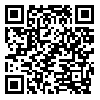Background: Despite the overwhelming progress that has been accomplished in the prevention of mortality due to cardiovascular disease, coronary artery disease (CAD) is the leading cause of death in the world.
The aim of this study was to compare of the effects of enoxaparin versus unfractionated heparin (UFH) on major clinical events, including mortality, myocardial infarction (MI), and recurrent angina, as well as bleeding in patients with non ST elevation acute coronary syndrome (NSTEACS). We also studied the need for coronary angiography and revascularization (PCI or CABG) in these patients.
Method: Two-hundred patients were enrolled in this study, 100 of whom received intravenous UFH (an initial bolus of 5000 U followed by continuous infusion of 1000 U/h) and 100 received enoxaparin subcutaneous injections of 1mg/kg twice daily for a minimum of 72 h. During their admission we recorded data regarding death, MI, recurrent angina, need for angiography and revascularization, and major and minor bleeding.
Results: The incidence of recurrent angina, total mortality and the need for revascularization were significantly lower in patients receiving enoxaparin compared to those receiving UFH, at 17% vs. 39% (p=0.002), 0% vs. 3% (p=0.035), 14% vs. 33% (p=0.001), respectively. However, there was no significant difference regarding the incidence of MI, major bleeding and cardiac death between the two groups.
Conclusions: This study showed that, in patients with NSTEACS, enoxaparin was superior to UFH regarding the prevention of major in-hospital clinical events, especially recurrent angina and the need for revascularization. We therefore recommend enoxaparin as an alternative antithrombotic agent to UFH in patients with NSTEACS.
| Rights and permissions | |
 |
This work is licensed under a Creative Commons Attribution-NonCommercial 4.0 International License. |


